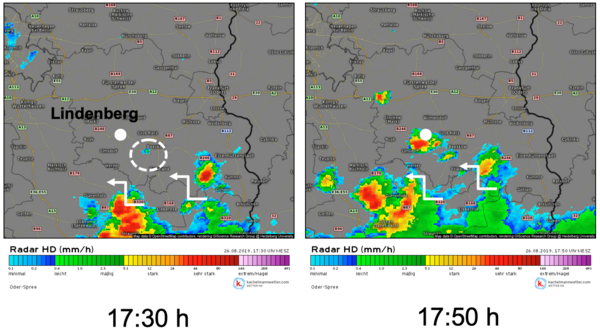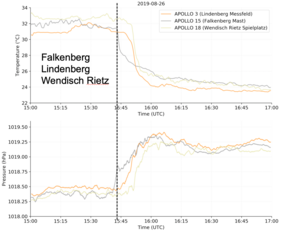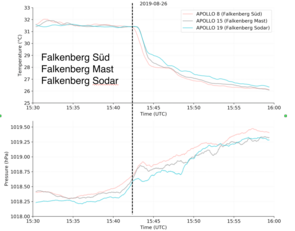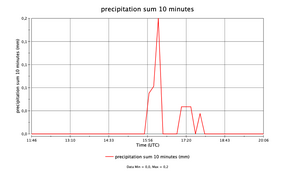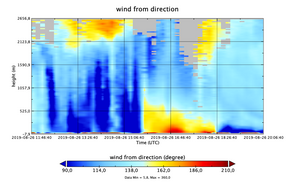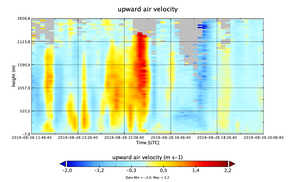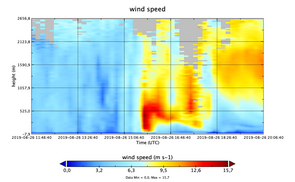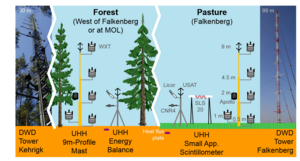Test Campaign 2019
In the period from19 to 30 August, 2019 the test campaign took place in Lindenberg/Falkenberg at the MOL-RAO. The aim was to test the devices and measurement strategies on site under realistic conditions.
The first week (19 August) was characterized by variable weather and westerly to northwesterly wind. The second week was mostly dominated by the influence of a weak high-pressure system and associated easterly wind. Strong diurnal cycles of temperature with growth of the boundary layer and development of thunderstorms during the afternoons were observable.
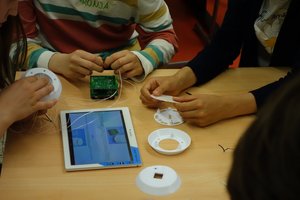
Citizen Science - FU Berlin (WEXICOM)
The preparations for the campaign 2020 are ongoing since early in the summer of 2019. In June a first workshop took place within the framework of the MINToring program of the project WEXICOM of the FU Berlin and the  Hans-Ertel-Centre with a group of pupils (8./9. grade). This workshop was designed the same way as the one that is going to be conducted with participating schools. Thereby, an introduction was given into the topic of the measurement campaign and the challenges associated with weather forecasts were explained, some experiments addressing the non-linear character of the atmosphere were conducted, and finally an own MESSI (Mein Eigenes Sub-Skalen-Instrument) was assembled. This MESSI was then tested on the measurement field.
Hans-Ertel-Centre with a group of pupils (8./9. grade). This workshop was designed the same way as the one that is going to be conducted with participating schools. Thereby, an introduction was given into the topic of the measurement campaign and the challenges associated with weather forecasts were explained, some experiments addressing the non-linear character of the atmosphere were conducted, and finally an own MESSI (Mein Eigenes Sub-Skalen-Instrument) was assembled. This MESSI was then tested on the measurement field.
The pupils were broadly excited about self-building the devices and liked the presentations and experiments. Especially experiments and hands-on activities were received well. The initial assemblage of a MESSI device by pupils who had not been involved in the project so far, has further delivered helpful insights into the setup of the workshop.
Further, a LoRa gateway for the transmission of data was installed on top of the office building at the MOL-RAO and the signal coverage in the surrounding was explored.
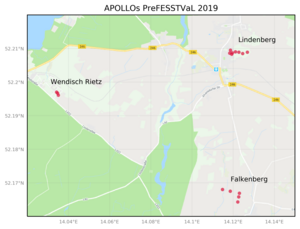
Cold Pools - Uni Hamburg
In the beginning of July a total of 19 APOLLO stations (= Autonomous cold POoL LOgger) were installed at the measurement station at the weather mast in the east of Hamburg for the first reference measurements under real conditions. Until the start of the pre-campaign in Lindenberg mid August first experiences concerning the operation time, the quality of the measured values and the general handling of the loggers were collected.
The university of Hamburg had taken the chance and joined the yearly field measurement training for master students with the pre campaign to test the function and properties of the APOLLOs. After a successful measurement period in Hamburg 18 APOLLOs were installed in the surrounding of Lindenberg/Falkenberg.
The pre campaign has shown that the APOLLOs measure reliably and the readings (especially on short timescales) are useful to answer the posed questions. The cold pool event of 26 August was particularly well-captured by the APOLLOs. The propagation speed and direction of the cold pool was measured consistently on the kilometer- and sub-kilometer scale. Even an intensification of the cold pool between Falkenberg and Lindenberg was noticeable.
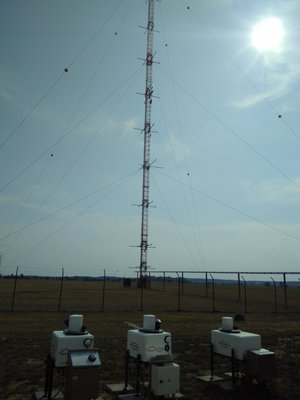
Boundary Layer Pattern and Wind gusts - Uni Frankfurt and Uni Köln/Uni Bonn
In the period 26 to 30 August the groups working with the data of the Doppler LiDARs (DLs) were present in Lindenberg. Irene Suomi (FMI), a specialist on the detection of wind gusts in DL data was moreover joining as a guest researcher. In addition to the two DWD DLs present in Falkenberg a DL of the TU Berlin was at site. The first focus was on synchronizing the three available devices in time. However, it turned out that the available software was not suitable for this task. As a consequence we focused on scan patterns that can be accomplished with individual DLs. Over the coarse of late summer and fall the DLs are going to collect data in different configuration that will then be evaluated to define the optimal scan strategy for the main campaign.
The cold pool event of 26 August was moreover nicely visible in the LiDAR data.
The cold pool event on 26 August
During the afternoon on 26 August thunderstorm cells were approaching Falkenberg from south east. South west of Beeskow a thunder cell developed that lead to precipitation and a remarkable cold pool soon thereafter. This cold pool was well identifiable in the APOLLO measurements in Lindenberg, Falkenberg and Wendisch-Rietz. In the measurements of the DLs the signature of the cold pool is also clearly visible.
Student Excursion
Students of the Master Degree Program Meteorology at the University of Hamburg participated in first measurements in the summer of 2019 to prepare the main campaign FESSTVaL. They operated measuring devices in Lindenberg and Falkenberg for 10 days on site and evaluated the data obtained.
One focus here was the investigation of the microclimatic difference between forest and meadow, which has so far been poorly understood. The following questions were examined in the context of the test campaign:
- How much is the turbulence in a forest below the canopy reduced? How does the turbulence and the vertical wind profile in a forest differ from those over a meadow?
- The canopy significantly modifies the energy balance on the ground in a forest. How strong is this modification? How does this modification manifest itself in other meteorological quantities, such as the temperature?
- The forest is known as a carbon sink through photosynthesis, with the photosynthetic activity strongly dependent on the sun's rays. Is therefore a daily cycle of the carbon dioxide concentration and the carbon dioxide flow to make out? How does the temporal course of these variables in a forest differ from that over a meadow?
In order to answer these questions, two identical measuring masts with integrated energy balance station were set up in the period from 19/08 to 30/08/2019 (see scheme).

